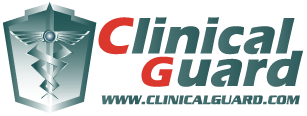Cleaning Pulse Oximeter’s: The Importance, Instructions And More!
Why is it important to keep your pulse oximeter clean?
Finger pulse oximeters use light-emitting diodes (LED) to emit red light and infrared light with wavelengths of 660nm and 940nm respectively. By calculating the difference of the absorption of the lights in these two wavelengths between oxyhaemoglobin and deoxyhaemoglobin, oxygen saturation of blood can be obtained. This is done by using a certain algorithm, by means of built-in integrated circuits (IC). Hence, it is important to keep the probe clean so that the lights are not blocked by dirt or dust. If these LED lights are inhibited, the reading of the pulse oximeter will be off, giving inaccurate blood oxygenation readings.
How to Clean a Finger Pulse Oximeter
Oil and/or dirt may accumulate over time, regardless of the frequency of use. Although rare, even a new pulse oximeter can get dirty.
To clean your pulse oximeter, you need to use a soft, dry, hygienic cloth to clean the inside of the clip, especially near the two LED lights—one infrared light and one red light. When looking at your pulse oximeter, you will be able to see the red LED light, but no visible light will be seen from the infrared light. It is important that you NEVER use water or any other liquid (besides alcohol wipes) to clean the probe, to prevent corrosion and/or accumulation of mud and dirt.
Taking care of your pulse oximeter: Step-by-step instructions:
- Before cleaning, make sure to turn off the oximeter.
- Using a soft, dry cloth or alcohol wipes, clean the exposed areas of the oximeter and LED lights.
- Next, clean the inside of the elastic thimble, making sure there is no dirt or blood.
- When cleaning the SPO2 sensors, use the same method of cleaning, using a dry, soft cloth or alcohol wipes. (Make sure to let the sensors dry before reuse).
- When the battery indicator turns on signifying low battery, replace them.
- Keep your pulse oximeter in a dry environment. A moist environment can damage the pulse oximeter, rendering it useless.
What are the signs you need to clean your pulse oximeter?
If your pulse oximeter is not working accurately or shows error information, this may be a sign of a dirty pulse oximeter. A simple cleaning may resolve the problem.
What are other things that can affect pulse oximetry readings?
Nail Varnish:
Nail varnish can affect the absorption of light emitted by the oximeter, causing inaccurate oxygenated hemoglobin readings. When using a pulse oximeter, it is important that you remove the nail polish from the finger being used.
Bright light:
Although there is soft rubber located on the probe to shield it from light, too much direct light can negatively affect the oximeter readings. To help with this problem, avoid direct bright light such as sunlight, on the probe, when taking an oximetry reading.
Movement:
Movement of the finger can cause inaccurate oximetry readings. To prevent negative readings, make sure there is no movement when taking the oximetry reading.
What happens if your pulse oximeter breaks?
If you follow the different precautions listed above, you can increase the life of your pulse oximeter, and ensure accurate readings. Unfortunately, pulse oximeters can break. If your pulse oximeter gets damaged or becomes dysfunctional, please check out our website, http://www.clinicalguard.com, to choose a high-quality, reliable pulse oximeter.
Looking to purchase a pulse oximeter?
Need to measure your blood oxygen levels on the go? For a limited time offer, you can buy an FDA-approved pulse oximeter, coming in 5 different colors, and equipped with a 1 year warranty and a carrying case, for just $14.99. To purchase, click here. If you have any questions, please do not hesitate to give us a call at 1-888-769-4827.
Disclaimer:
The information on this website aims to provide customers with relevant knowledge regarding our products. Under no circumstances should the information be used for therapeutic purposes. Customers must consult their doctors for the correct use of these information and products. ClinicalGuard.com is not responsible for any losses or accidents caused by the use of information on this website.

